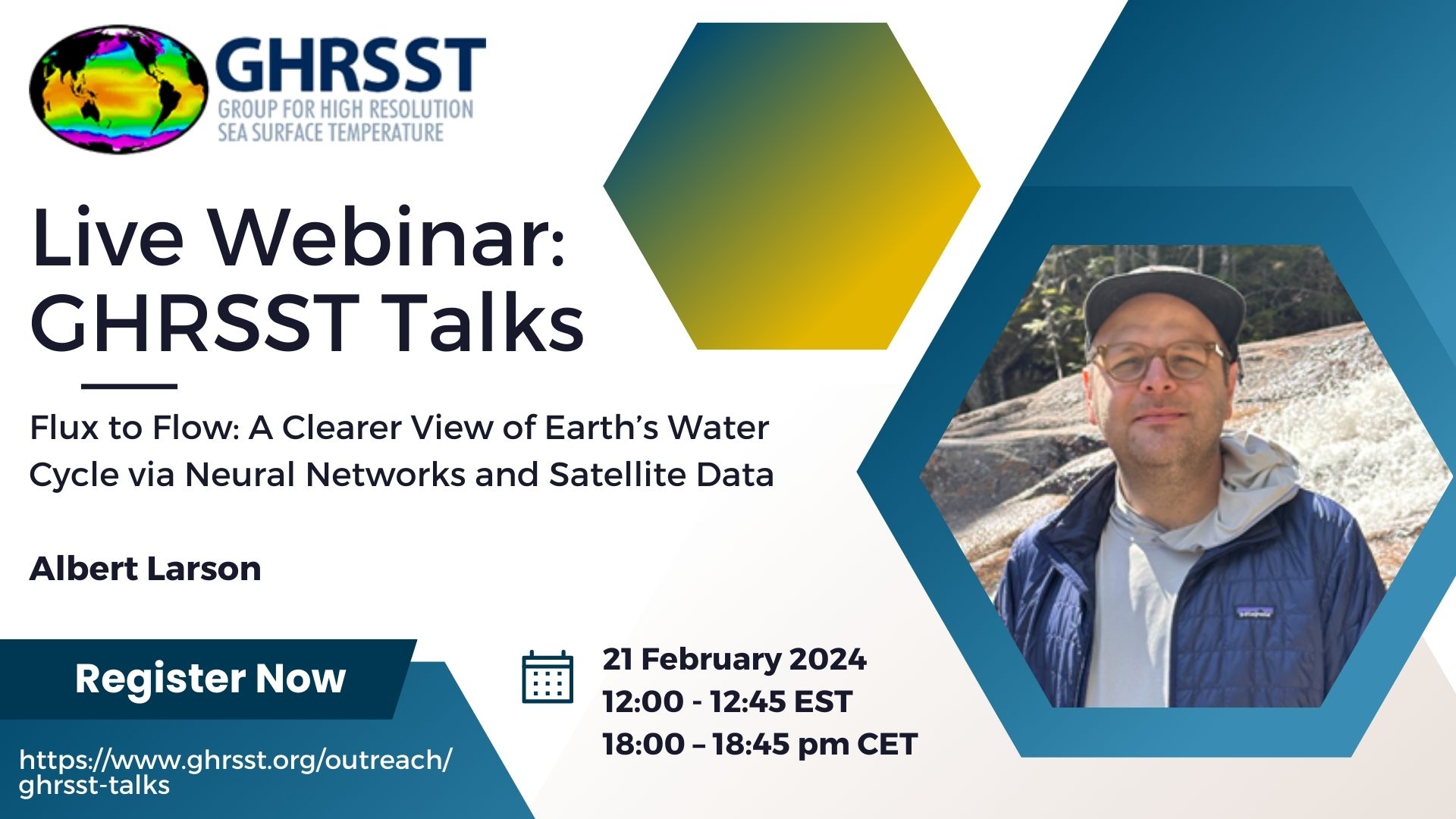Wednesday, February 21, 2024
Time:
From 18:00 – 18:45 (CET)
12:00 – 12:45 (EST)
(check your timezone https://www.worldtimebuddy.com)
Flux to Flow: A Clearer View of Earth’s Water Cycle via Neural Networks and Satellite Data
Abstract
Earth’s weather and climate changes dynamically, and humans must monitor the evolution of our environment or fail to plan and adapt. Water is our most valuable resource, and as such it is of the utmost importance to have a continuous view of its movements as water cycles over, in, and under land, in the atmosphere, and in the sea. One way that we observe the water cycle is with satellite measurements. Unfortunately, the resolution of these instruments is typically too coarse to visualize many transient phenomena of interest. If their vision is fine enough, the instrument captures only a small space of Earth at any given time. Furthermore, it is valuable to connect satellite-derived water cycle measurements of large watershed basins with ground truth observations of the rivers flowing through these basins. These connection operations, though, are time and cost prohibitive or limited in performance, with efficient functions veiled behind black box closed-source solutions. Herein, all of the above facts are investigated under the veil of a single name, Flux to Flow (F2F). The name Flux to Flow encapsulates how the work takes several fluxes of geospatial data and transforms them into more coherent flows of knowledge. F2F performs metrologically well in the operation of streamflow forecasting when focused solely on a single or a few hydrological monitoring nodes at a time. Based on the results, future work might entail scaling up of the system to many computing nodes running in tandem, observing more adjacent outputs, or in its application as a standard device in connected municipal systems.
About Albert
Albert Larson is a recent graduate from the University of Rhode Island. He has a doctorate in environmental engineering and a masters in business administration, which he received after about ten years working in a private industry. Much longer ago, he obtained a bachelors of science degree in mechanical engineering.
Albert is interested in using computers to study the environment. Of particular interest is the movement of water throughout the hydrosphere. He is interested in the interface between science, education, and public policy. He is motivated by a desire to improve the health of the planet as it relates to plants, animals, humans, and the natural environment writ large.

